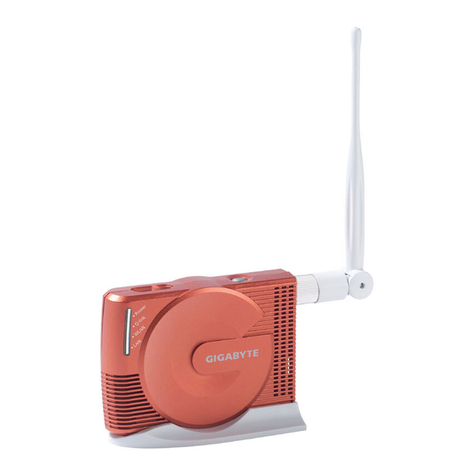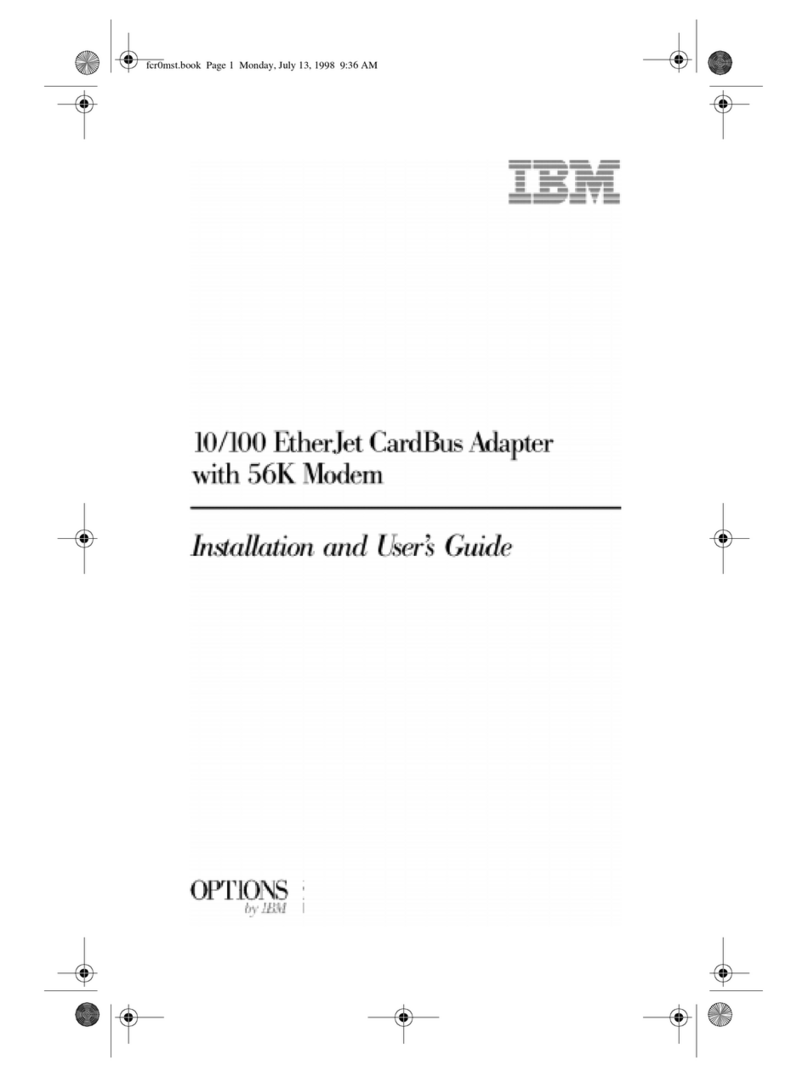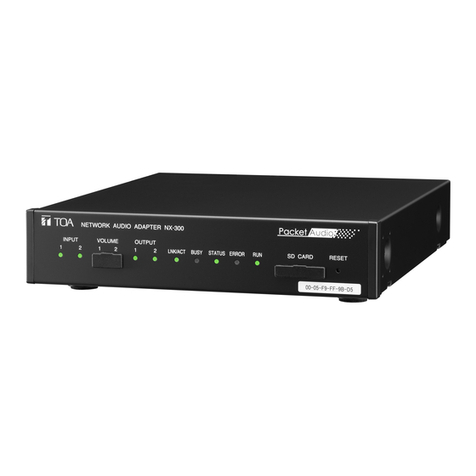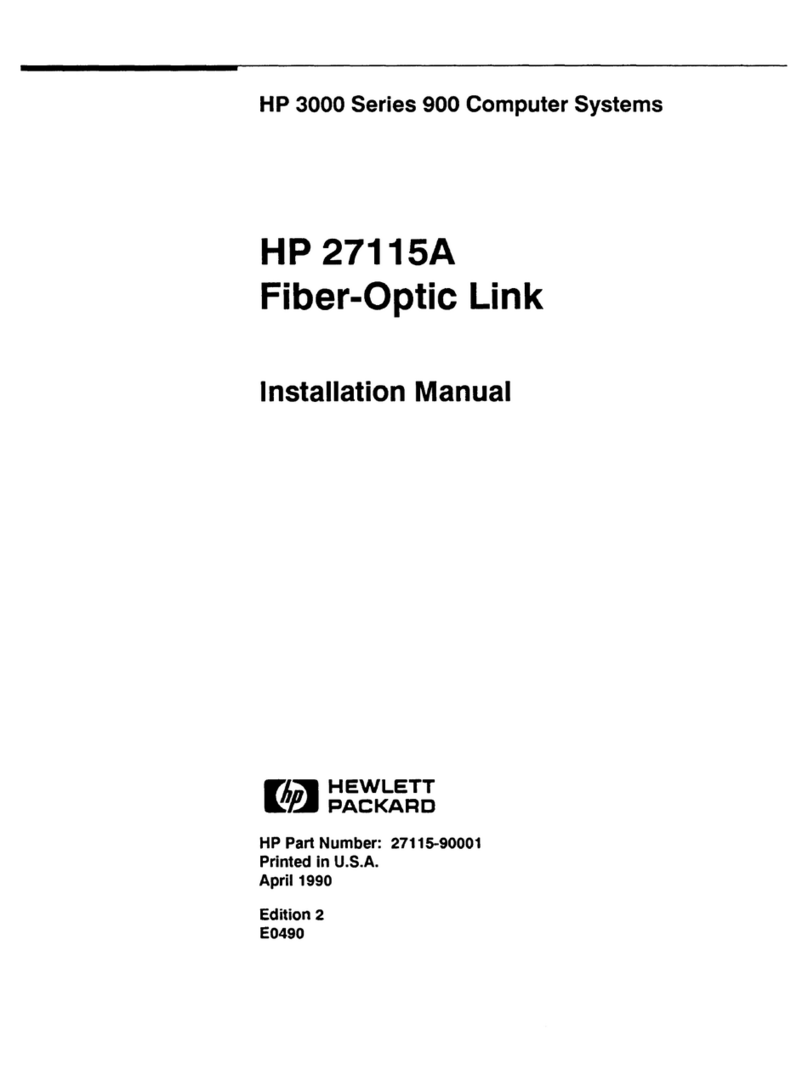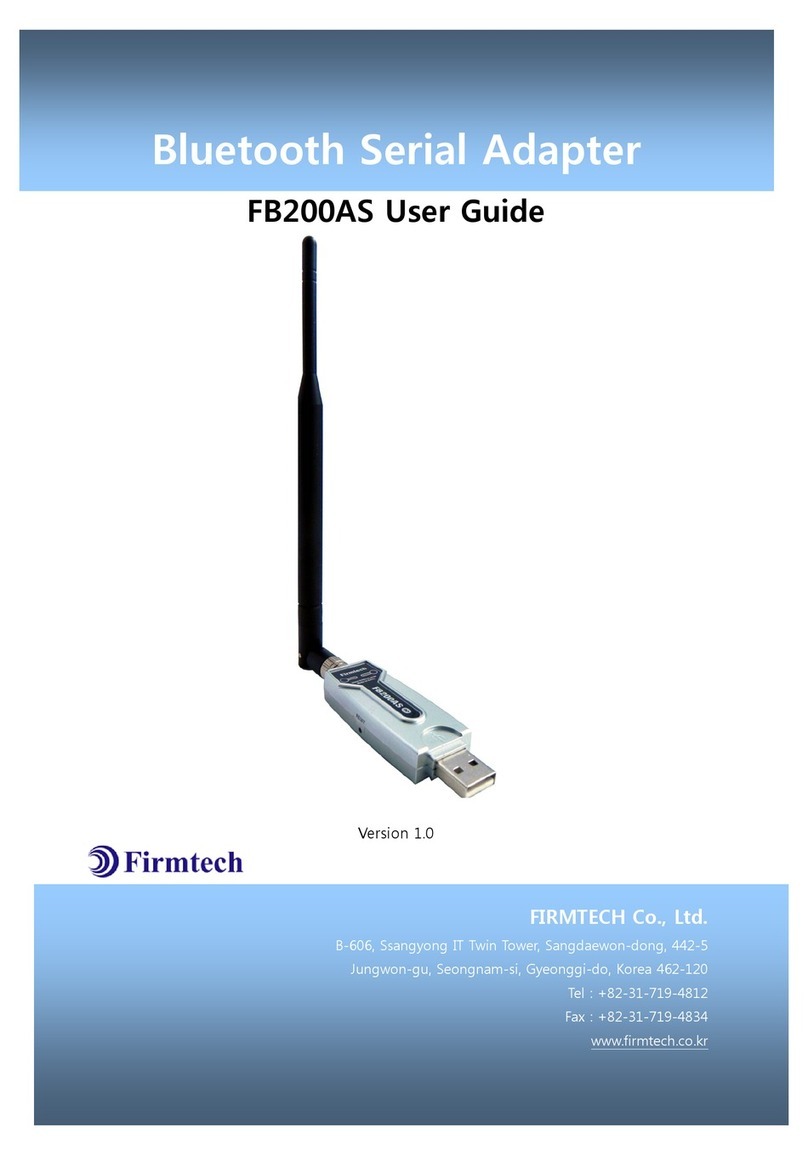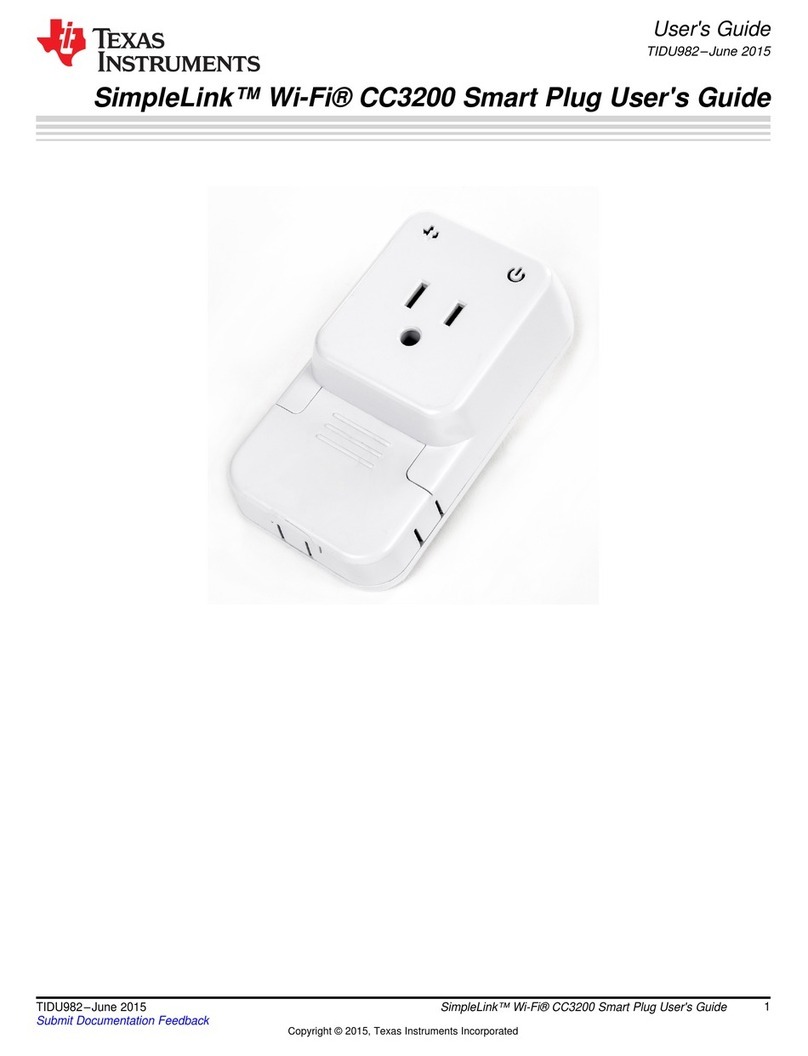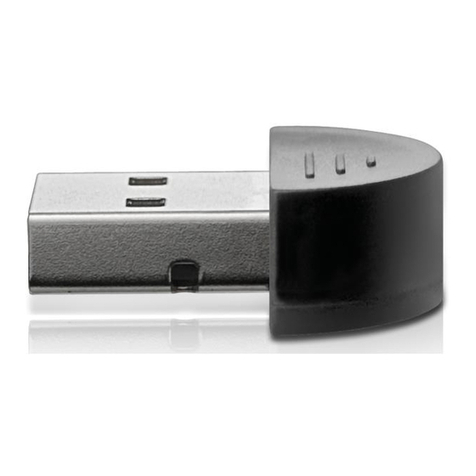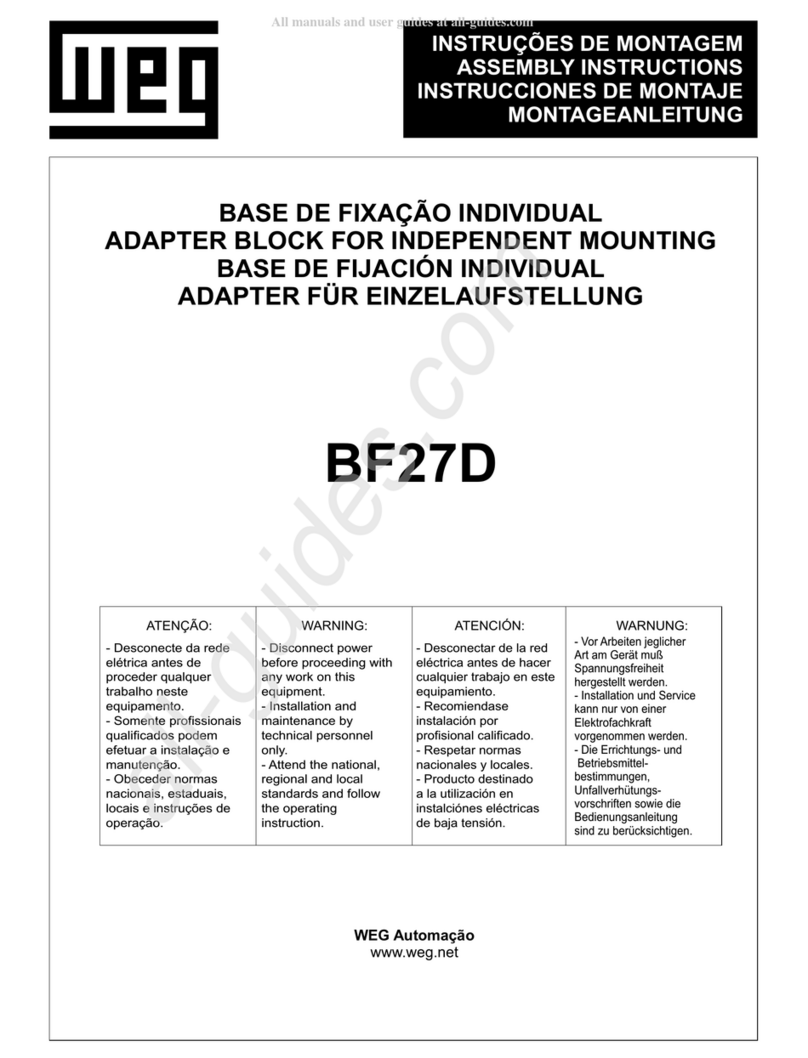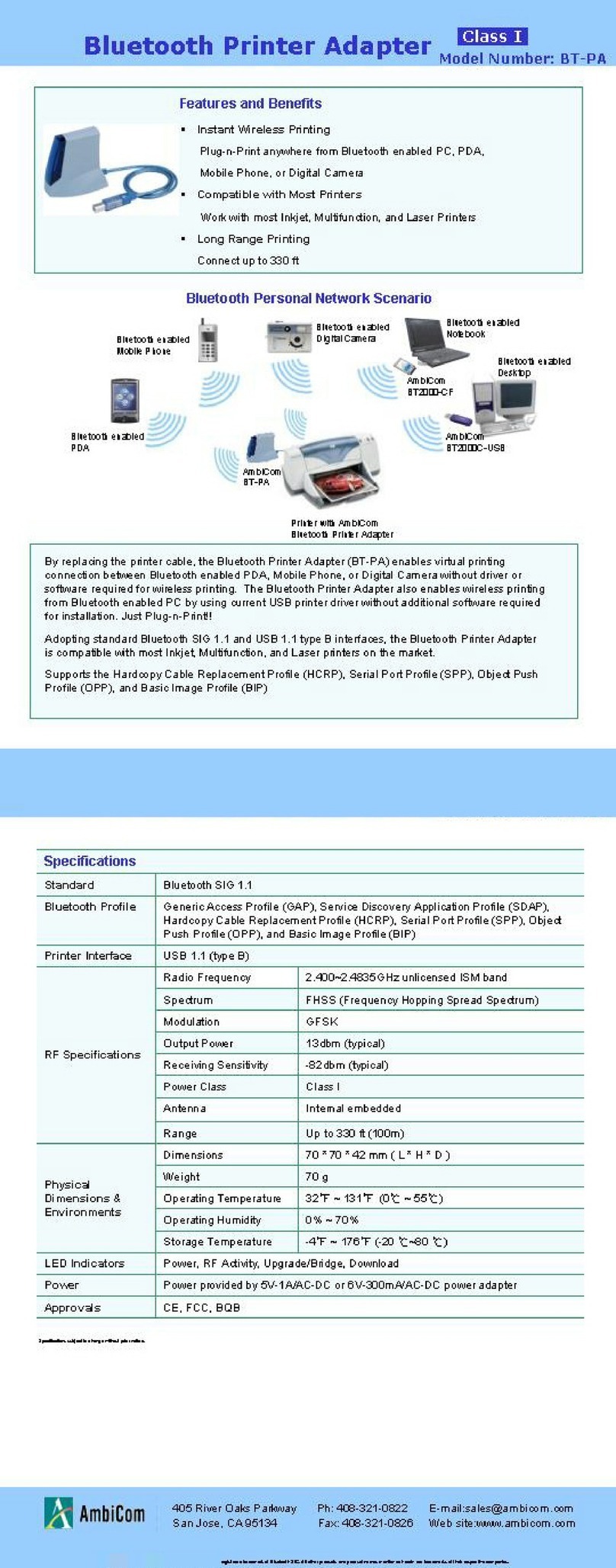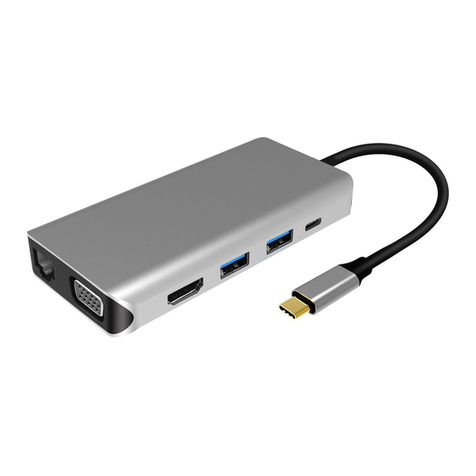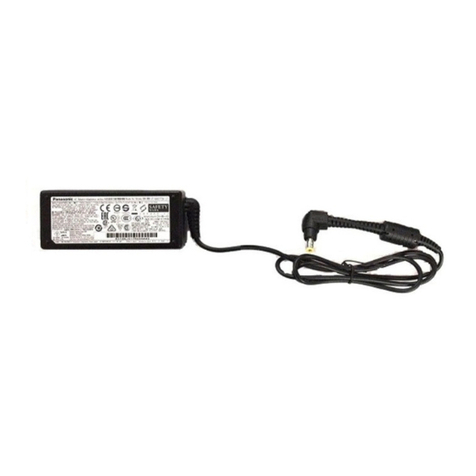Benning CC 3 User manual

DBedienungsanleitung
Operating manual
FNotice d‘emploi
EInstrucciones de servicio
Návod k obsluze
IIstruzioni d’uso
Gebruiksaanwijzing
Instrukcja obsługi
SBruksanvisning
+
40A : 10mV/A
300A : 1mV/A
BATT
LOW
PWR
ON
BENNING CC 3
ZERO A
OFF
40A
300A
CAT. III 600V
300A
BENNING CC 3

+
40A : 10mV/A
300A : 1mV/A
BATT
LOW
PWR
ON
BENNING CC 3
ZERO A
OFF
40A
300A
CAT. III 600V
300A
Bild 1: Gerätefrontseite
Fig. 1: Appliance front face
Fig. 1: Panneau avant de l‘appareil
Fig. 1: Parte frontal del equipo
obr. 1: Čelní strana přístroje
ill. 1: Lato anteriore apparecchio
Fig. 1: Voorzijde van het apparaat
Rys.1: Panel przedni przyrządu
Fig. 1: Framsida
09/ 2016
BENNING CC 3
D F E I S
6
7
8
9

Bild 2: Gleich-/ Wechselstrommessung
Fig. 2: AC/ DC current measurement
Fig. 2: Mesure de courant continu/ alternatif
Fig. 2: Medición de corriente contínua/ alterna
obr. 2:
Měření stejnosměrného/ střídavého proudu
ill. 2: Misura corrente
continua/ alternata
Fig. 2: Meten van gelijk-/ wisselstroom
Rys.2: Pomiar prądu stałego/ przemiennego
Fig. 2: Lik-/ växelströmsmätning
09/ 2016
BENNING CC 3
D F E I S
+
40A : 10mV/A
300A : 1mV/A
BATT
LOW
PWR
ON
BENNING CC 3
ZERO A
OFF
40A
300A
CAT. III 600V
300A
Auto Sense
Lo-Z
AC+DC Peak MAX MIN
HOLD
MM 7-1
AutoV
LoZ
VoltSensor
Press 2 Sec
PEAK HOLD
ac + dc
ac + dc
ac + dc
ac + dc
Smart
HOLD

Bild 3: Batteriewechsel
Fig. 3: Battery replacement
Fig. 3 : Remplacement de la pile
Fig. 3: Cambio de pila
Obr. 3: Výměna baterie
Ill. 3: Sostituzione batterie
Fig. 3: Vervanging van de batterij
Rys. 3: Wymiana baterii
Bild 3: Batteribyte
09/ 2016
BENNING CC 3
D F E I S

Bedienungsanleitung
BENNING CC 3
Stromzangenadapter zur Gleich- und Wechselstrommessung
Inhaltsverzeichnis
1. Benutzerhinweise
2. Sicherheitshinweise
3. Lieferumfang
4. Gerätebeschreibung
5. Allgemeine Angaben
6. Umgebungsbedingungen
7. Elektrische Angaben
8. Messen mit dem BENNING CC 3
9. Instandhaltung
10. Umweltschutz
1. Benutzerhinweise
Diese Bedienungsanleitung richtet sich an
- Elektrofachkräfte und
- elektrotechnisch unterwiesene Personen
Der BENNING CC 3 ist zur Messung in trockener Umgebung vorgesehen. Er
darf nicht in Stromkreisen mit einer höheren Nennspannung als 600 V DC/ AC
eingesetzt werden. (Näheres hierzu im Abschnitt 6. „Umgebungsbedingungen“).
In der Bedienungsanleitung und auf dem BENNING CC 3 werden folgende
Symbole verwendet:
Anlegen um GEFÄHRLICH AKTIVE Leiter oder Abnehmen von
diesen ist zugelassen.
Warnung vor elektrischer Gefahr!
Steht vor Hinweisen, die beachtet werden müssen, um Gefahren für
Menschen zu vermeiden.
Achtung Dokumentation beachten!
Das Symbol gibt an, dass die Hinweise in der Bedienungsanleitung
zu beachten sind, um Gefahren zu vermeiden.
Dieses Symbol auf dem BENNING CC 3 bedeutet, dass das
BENNING CC 3 schutzisoliert (Schutzklasse II) ausgeführt ist.
Dieses Symbol auf dem BENNING CC 3 bedeutet, dass das
BENNING CC 3 konform zu den EU-Richtlinien ist.
(AC) Wechsel-Spannung oder Strom.
(DC) Gleich-Spannung oder Strom.
Erde (Spannung gegen Erde).
09/ 2016
BENNING CC 3
1
D

2. Sicherheitshinweise
Das Gerät ist gemäß
DIN VDE 0411 Teil 1/ EN 61010-1
DIN VDE 0411 Teil 2-032/ EN 61010-2-032
DIN VDE 0411 Teil 031/ EN 61010-031
gebaut und geprüft und hat das Werk in einem sicherheitstechnisch ein-
wandfreien Zustand verlassen.
Um diesen Zustand zu erhalten und einen gefahrlosen Betrieb sicherzustellen,
muss der Anwender die Hinweise und Warnvermerke beachten, die in dieser
Anleitung enthalten sind. Fehlverhalten und Nichtbeachtung der Warnungen
kann zu schwerwiegenden Verletzungen oder zum Tode führen.
Extreme Vorsicht bei Arbeiten um blanke Leiter oder Haupt-
leitungsträger. Ein Kontakt mit Leitern kann einen Elektroschock
verursachen.
Das Gerät darf nur in Stromkreisen der Überspannungskategorie
III mit max. 600 V Leiter gegen Erde benutzt werden.
Beachten Sie, dass Arbeiten an spannungsführenden Teilen und
Anlagen grundsätzlich gefährlich sind. Bereits Spannungen ab
30 V AC und 60 V DC können für den Menschen lebensgefähr-
lich sein.
Vor jeder Inbetriebnahme überprüfen Sie das Gerät und die
Leitungen auf Beschädigungen.
Ist anzunehmen, dass ein gefahrloser Betrieb nicht mehr möglich ist, ist das
Gerät außer Betrieb zu setzen und gegen unbeabsichtigten Betrieb zu sichern.
Es ist anzunehmen, dass ein gefahrloser Betrieb nicht mehr möglich ist,
- wenn das Gerät oder die Messleitungen sichtbare Beschädigungen aufweisen,
- wenn das Gerät nicht mehr arbeitet,
- nach längerer Lagerung unter ungünstigen Verhältnissen,
- nach schweren Transportbeanspruchungen.
Um eine Gefährdung auszuschließen
- berühren Sie die Messleitungen nicht an den blanken
Steckverbindern,
- stecken Sie die Messleitungen in die entsprechend
gekennzeichneten Messbuchsen am Multimeter
3. Lieferumfang
Zum Lieferumfang des BENNING CC 3 gehören:
3.1 ein Stück BENNING CC 3 mit einer fest angeschlossenen, spiralförmigen
Sicherheitsmessleitung mit 90 °-abgewinkelten 4 mm Sicherheitsstecker,
3.2 eine Stück Kompakt-Schutztasche,
3.3 eine 9-V-Blockbatterie (zur Erstbestückung im Gerät eingebaut),
3.4 eine Bedienungsanleitung.
4. Geräteschreibung
Der Stromzangenadapter BENNING CC 3 ist ein Messadapter für analoge und
digitale Multimeter und dient der Gleich-/ Wechselstrommessungen bis 300 A.
siehe Bild 1: Gerätefrontseite
Die im Bild 1 angegebenen Bedienelemente werden wie folgt beschrieben:
Messzange, zum Umfassen des einadrigen, wechselstromdurchossenen
Leiters.
Stromzangenwulst, schützt vor Leiterberührung.
Öffnungshebel, zum Öffnen und Schließen der Messzange.
Schiebeschalter, dient zur Wahl der Messbereiche
- Aus (OFF)
- Gleich- (DC) und Wechselstrommessung (AC) bis 40 A,
- Gleich- (DC) und Wechselstrommessung (AC) bis 300 A,
ZERO-Taste (Nullabgleichstaste), zum Nullabgleich bei DC-Strommessung,
6
Rote LED (Batterieanzeige), leuchtet bei entladener Batterie bzw. kündigt
nach ca. 30 Min. die selbsttätige Abschaltung an (APO, Auto-Power-Off)
7 Grüne LED (Einschalt-LED), blinkt im eingeschalteten Zustand,
8Gehäuse mit Beschriftungsfeld
9Spiralförmige Sicherheitsmessleitung mit 4 mm Sicherheitsstecker, rot,
schwarz, 90 °-abgewinkelt.
09/ 2016
BENNING CC 3
2
D

5. Allgemeine Angaben
5.1 Allgemeine Angaben zum Stromzangenadapter
5.1.1 Der Schiebeschalter dient der Anwahl der Messbereiche von 40 A
oder 300 A AC/DC.
5.1.2 Die ZERO-Taste (Nullabgleichstaste) dient dem Nullabgleich bei
DC-Strommessungen. Bei geschlossener Messzange ist die ZERO-
Taste gedrückt zu halten, bis sich ein Messwert von annähernd 0 V
am Multimeter einstellt.
5.1.3 Der BENNING CC 3 schaltet nach ca. 30 min. selbsttätig ab (APO, Auto-
Power-Off). Es lässt sich durch Betätigen des Schalters wieder ein-
schalten. Die automatische Abschaltung wird durch das Aueuchten der
roten LED (Batterieanzeige) 6angekündigt.
5.1.4 Der BENNING CC 3 wird durch eine 9-V-Batterie gespeist (IEC 6LR61/
“Block”).
5.1.5 Wenn die Batteriespannung unter die vorgesehene Arbeitsspannung
des BENNING CC 3 sinkt, leuchtet die rote LED (Batterieanzeige) 6.
5.1.6 Die Lebensdauer der Batterie beträgt etwa 66 Stunden (Alkalibatterie).
5.1.7 Sensorart: Hallsensor für Gleich- und Wechselstrom.
5.1.8 Temperaturkoefzient des Messwertes:
0,2 x (angegebene Messgenauigkeit)/ °C < 18 °C oder > 28 °C, bezogen
auf den Wert auf Referenztemperatur von 23 °C,
5.1.9 Größte Zangenöffnung: 25 mm
5.1.10 Maximaler Leiterdurchmesser: 22 mm
5.1.11 Geräteabmessungen: (L x B x H) 185 x 66 x 40 mm,
5.1.12 Gerätegewicht: 270 g
6. Umgebungsbedingungen
- Der BENNING CC 3 ist für Messungen in trockenen Umgebungen vorgesehen,
- Barometrische Höhe bei Messungen: Maximal 2000 m,
- Überspannungskategorie IEC 60664/ IEC 61010, 600 V Kategorie III,
- Verschmutzungsgrad 2 gemäß EN 61010-1,
- Schutzart: IP 30 (DIN VDE 0470-1 IEC/ EN 60529)
3 - erste Kennziffer: Schutz gegen Zugang zu gefährlichen Teilen und
Schutz gegen feste Fremdkörper, > 2,5 mm Durchmesser
0 - zweite Kennziffer: Kein Wasserschutz,
- Arbeitstemperatur und relative Luftfeuchte:
Bei Arbeitstemperatur von 0 °C bis 30 °C: relative Luftfeuchte kleiner 80 %,
Bei Arbeitstemperatur von 31 °C bis 40 °C: relative Luftfeuchte kleiner 75 %,
Bei Arbeitstemperatur von 41 °C bis 50 °C: relative Luftfeuchte kleiner 45 %,
- Lagerungstemperatur: Der BENNING CC 3 kann bei Temperaturen von
- 20 °C bis + 60 °C gelagert werden.
7. Elektrische Angaben
Bemerkung: Die Messgenauigkeit wird angegeben als Summe aus
- einem relativen Anteil des Messwertes und
- eines Stromwertes in A.
Die Messgenauigkeit gilt bei einer Temperatur von 23 °C ± 5 °C und einer relati-
ven Luftfeuchtigkeit kleiner 75 %.
7.1 Gleichstrombereiche
Ausgangsspannung: 10 mVDC/ ADC im 40 A-Messbereich
1 mVDC/ ADC im 300 A-Messbereich
Messbereich Messwert Ausgang Messgenauigkeit*
40 A 0 . . . 40 A 0 . . . 400 mV ± (2,0 % + 0,2 A)
300 A 40 . . . 200 A 40 . . . 200 mV ± (2,0 % + 1 A)
200 . . . 300 A 200 . . . 300 mV ± (2,9 % + 2 A)
* Die Messgenauigkeit ist speziziert für eine Sinuskurvenform. Die angegeb-
ne Genauigkeit ist speziziert für Leiter, die mit der Messzange mittig um-
fasst werden (siehe Bild 2). Für Leiter die nicht mittig umfasst werden, muss
ein zusätzlicher Fehler von 1 % des Anzeigewertes berücksichtigt werden.
Lastimpedanz: min. 10 MΩ (Eingangswiderstand des Multimeters)
7.2 Wechselstrombereiche
Ausgangsspannung: 10 mVAC/ AAC im 40 A-Messbereich
1 mVAC/ AAC im 300 A-Messbereich
09/ 2016
BENNING CC 3
3
D

Messbereich Messwert Ausgang Messgenauigkeit*
im Frequenzbereich 40 Hz - 400 Hz
40 A 0 . . . 40 A 0 . . . 400 mV ± (2,0 % + 0,2 A)
300 A 40 . . . 200 A 40 . . . 200 mV ± (2,0 % + 1 A)
200 . . . 300 A 200 . . . 300 mV ± (2,9 % + 2 A)
* Die Messgenauigkeit ist speziziert für eine Sinuskurvenform. Die angegeb-
ne Genauigkeit ist speziziert für Leiter, die mit der Messzange mittig um-
fasst werden (siehe Bild 2). Für Leiter die nicht mittig umfasst werden, muss
ein zusätzlicher Fehler von 1 % des Anzeigewertes berücksichtigt werden.
Lastimpedanz: min. 10 MΩ (Eingangswiderstand des Multimeters)
8. Messen mit dem BENNING CC 3
8.1 Vorbereiten der Messung
Benutzen und lagern Sie den BENNING CC 3 nur bei den angegebenen Lager-
und Arbeitstemperaturen, vermeiden sie dauernde Sonneneinstrahlung.
- Die zum Lieferumfang gehörenden spiralförmige Sicherheitsmessleitung
entspricht in Nennspannung und Nennstrom dem BENNING CC 3.
Die Sicherheitsmessleitung ist fest mit dem BENNING CC 3 verbunden und
nicht abnehmbar.
- Isolation der Sicherheitsmessleitungen überprüfen. Wenn die Isolation be-
schädigt ist, ist das BENNING CC 3 sofort auszusondern.
- Umfassen Sie keinen stromdurchossenen Leiter mit der Messzange bevor
Sie nicht den BENNING CC 3 mit einem Multimeter verbunden haben.
- Starke Störquellen in der Nähe des BENNING CC 3 können zu instabiler
Anzeige und zu Messfehlern führen.
- Keine Spannung an den Ausgangskontakten des BENNING CC 3 legen.
Maximale Spannung gegen Erdpotential beachten!
Elektrische Gefahr!
Die höchste Spannung, die an dem BENNING CC 3 gegenüber Erdpotential lie-
gen darf, beträgt 600 V.
8.2 Gleichstrommessung
- Mit dem Schiebeschalter den Messbereich 40 A oder 300 A wählen.
- Stellen Sie das Multimeter auf die Funktion Gleichspannungsmessung
(V DC) und wählen Sie einen Messbereich der Spannungen im Bereich von
1 mV bis 400 mV anzeigen kann.
- Den schwarzen 4 mm Sicherheitsstecker der spiralförmigen Sicherheits-
messleitung mit der COM-Buchse des Multimeters kontaktieren.
- Den roten 4 mm Sicherheitsstecker der spiralförmigen Sicherheitsmessleitung
mit der Buchse für den Spannungseingang (V) des Multimeters kontaktieren.
- Die ZERO-Taste (Nullabgleichtaste) gedrückt halten bis sich ein Messwert
am Multimeter auf annähernd 0 V einstellt. Hierzu ist die Messzange zu
schließen und von dem stromführenden Leiter (Fremdfeld) zu entfernen.
- Öffnungshebel betätigen und mit der Messzange den einadrigen,
stromdurchossenen Leiter umfassen.
- Den Spannungswert auf dem Multimeter ablesen und unter Berücksichtigung
des Umrechnungfaktors auf den Stromwert umrechnen.
40 A-Messbereich: 10 mV/ A
300 A-Messbereich: 1 mV/ A
(siehe Gehäuse mit Beschriftungsfeld 8)
Beispiel:
Messbereich: 300 A
Angezeigter Spannungswert am Multimeter: 0,250 V DC = 250 mV DC,
entspricht einen gemessenen Stromwert von 250 A DC.
siehe Bild 2: Gleich-/ Wechselstrommessung
8.3 Wechselstrommessung
- Mit dem Schiebeschalter den Messbereich 40 A oder 300 A wählen.
- Stellen Sie das Multimeter auf die Funktion Wechselspannungsmessung
(V AC) und wählen Sie einen Messbereich der Spannungen im Bereich von
1 mV bis 400 mV anzeigen kann.
- Den schwarzen 4 mm Sicherheitsstecker der spiralförmigen Sicherheits-
messleitung mit der COM-Buchse des Multimeters kontaktieren.
- Den roten 4 mm Sicherheitsstecker der spiralförmigen Sicherheitsmessleitung
mit der Buchse für den Spannungseingang (V) des Multimeters kontaktieren.
- Öffnungshebel betätigen und mit der Messzange den einadrigen,
stromdurchossenen Leiter umfassen.
09/ 2016
BENNING CC 3
4
D

- Den Spannungswert auf dem Multimeter ablesen und unter Berücksichtigung
des Umrechnungfaktors auf den Stromwert umrechnen.
40 A-Messbereich: 10 mV/ A
300 A-Messbereich: 1 mV/ A
(siehe Gehäuse mit Beschriftungsfeld 8)
Beispiel:
Messbereich: 300 A
Angezeigter Spannungswert am Multimeter: 0,250 V AC = 250 mV AC,
entspricht einen gemessenen Stromwert von 250 A AC.
siehe Bild 2: Gleich-/ Wechselstrommessung
9. Instandhaltung
Vor dem Öffnen den BENNING CC 3 unbedingt spannungsfrei
schalten! Elektrische Gefahr!
Die Arbeit an dem geöffneten BENNING CC 3 unter Spannung ist
ausschließlich Elektrofachkräften vorbehalten, die dabei besondere
Maßnahmen zur Unfallverhütung treffen müssen.
So machen Sie den BENNING CC 3 spannungsfrei, bevor Sie das Gerät öffnen:
- Entfernen Sie zuerst den BENNING CC 3 vom Messobjekt.
- Entfernen Sie dann beide Sicherheitsmessleitung von dem Multimeter.
Der Stromzangenadapter BENNING CC 3 besitzt keine Sicherung.
9.1 Sicherstellen des Gerätes
Unter bestimmten Voraussetzungen kann die Sicherheit im Umgang mit dem
BENNING CC 3 nicht mehr gewährleistet sein, z.B. bei:
- Sichtbaren Schäden am Gehäuse,
- Fehlern bei Messungen,
- Erkennbaren Folgen von längerer Lagerung unter unzulässigen
Bedingungen und
- Erkennbaren Folgen von außerordentlichen Transportbeanspruchungen.
In diesen Fällen ist der BENNING CC 3 sofort von der Messstelle zu entfernen
und gegen erneute Nutzung zu sichern.
9.2 Reinigung
Reinigen Sie das Gehäuse äußerlich mit einem sauberen und trockenen Tuch
(Ausnahme spezielle Reinigungstücher). Verwenden Sie keine Lösungs- und/
oder Scheuermittel, um das Gerät zu reinigen. Achten Sie unbedingt darauf,
dass das Batteriefach und die Batteriekontakte nicht durch auslaufendes
Batterie-Elektrolyt verunreinigt werden.
Falls Elektrolytverunreinigungen oder weiße Ablagerungen im Bereich der
Batterie oder des Batteriegehäuses vorhanden sind, reinigen Sie auch diese
mit einem trockenen Tuch.
9.3 Batteriewechsel
Vor dem Öffnen das BENNING CC 3 unbedingt spannungsfrei
machen! Elektrische Gefahr!
Der BENNING CC 3 wird von einer 9-V-Blockbatterie gespeist. Ein Batterie-
wechsel (siehe Bild 3) ist erforderlich, wenn die rote LED (Batterieanzeige) 6
leuchtet.
So wechseln Sie die Batterie:
- Entfernen Sie den BENNING CC 3 vom Messobjekt.
- Entfernen Sie die Sicherheitsmessleitungen vom Multimeter.
- Bringen Sie den Schiebeschalter 4in die Schaltstellung “OFF”.
- Legen Sie den BENNING CC 3 auf die Frontseite und lösen Sie die Schlitz-
Schraube vom Batteriedeckel.
- Heben Sie den Batteriedeckel (im Bereich der Gehäusevertiefungen) vom
Unterteil ab.
- Heben Sie die entladene Batterie aus dem Batteriefach, und nehmen Sie
die Batteriezuleitungen vorsichtig von der Batterie ab.
- Die neue Batterie ist mit den Batteriezuleitungen zu verbinden, und ord-
nen Sie diese so, dass sie nicht zwischen den Gehäuseteilen gequetscht
werden. Legen Sie dann die Batterie an die dafür vorgesehene Stelle im
Batteriefach.
- Rasten Sie den Batteriedeckel an das Unterteil an, und ziehen Sie die
Schraube an.
siehe Bild 3: Batteriewechsel
09/ 2016
BENNING CC 3
5
D

09/ 2016
BENNING CC 3
6
D
Leisten Sie Ihren Beitrag zum Umweltschutz! Batterien dürfen
nicht in den Hausmüll. Sie können bei einer Sammelstelle für
Altbatterien bzw. Sondermüll abgegeben werden. Informieren
Sie sich bitte bei Ihrer Kommune.
9.4 Kalibrierung
BENNING garantiert die Einhaltung der in der Bedienungsanleitung auf-
geführten technischen Spezifikationen und Genauigkeitsangaben für das
1. Jahr nach dem Auslieferungsdatum. Um die angegebenen Genauigkeiten
der Messergebnisse zu erhalten, muss das Gerät regelmäßig durch unseren
Werksservice kalibriert werden. Wir empfehlen ein Kalibrierintervall von einem
Jahr. Senden Sie hierzu das Gerät an folgende Adresse:
Benning Elektrotechnik & Elektronik GmbH & Co. KG
Service Center
Robert-Bosch-Str. 20
D - 46397 Bocholt
10. Umweltschutz
Bitte führen Sie das Gerät am Ende seiner Lebensdauer den zur
Verfügung stehenden Rückgabe- und Sammelsystemen zu.

09/ 2016
BENNING CC 3
7
Operating instructions
BENNING CC 3
Current clamp adapter for direct and alternating current measurement
Contents
1. User notes
2. Safety note
3. Scope of delivery
4. Description of appliance tester
5. General information
6. Environment conditions:
7. Electrical specifications
8. Making measurements with the BENNING CC 3
9. Maintenance
10. Environmental notice
1. User notes
These operating instructions are intended for
- skilled electricians and
- trained electrical personnel.
The BENNING CC 3 is intended for making measurements in dry environ-
ment. It must not be used for making measurements in electric circuits with a
nominal voltage greater than 600 V DC/ AC (for further details, see Section 6.
“Environmental conditions”).
The following symbols are used in these operating instructions and on the
BENNING CC 3:
Application around and removal from HAZARDOUS LIVE conduc-
tors is permitted.
Warning of electrical danger!
Indicates instructions which must be followed to avoid danger to
persons.
Important, comply with the documentation!
The symbol indicates that the information provided in the operating
instructions must be complied with in order to avoid risks.
This symbol on the BENNING CC 3 means that the BENNING CC 3
is totally insulated (protection class II).
This symbol on the BENNING CC 3 means that the BENNING CC 3
complies with the EU directives.
(AC) Alternating voltage or current.
(DC) Direct voltage or current.
Earth (voltage against earth).

09/ 2016
BENNING CC 3
8
2. Safety note
The instrument is built and tested in accordance with
DIN VDE 0411 part 1/ EN 61010-1
DIN VDE 0411 part 2-032/ EN 61010-2-032
DIN VDE 0411 part 031/ EN 61010-031
and has left the factory in perfectly safe technical state.
To maintain this state and ensure safe operation of the appliance tester, the user
must observe the notes and warnings given in these instructions at all times.
Improper handling and non-observance of the warnings might involve severe
injuries or danger to life.
WARNING! Be extremely careful when working with bare con-
ductors or main line carrier! Contact with live conductors will
cause an electric shock!
The unit may be used only in power circuits within the over
voltage category III with a conductor for 600 V max. to earth.
Remember that work on electrical components of all kinds is
dangerous. Even low voltages of 30 V AC and 60 V DC may be
dangerous to human life.
Before starting the appliance tester up, always check it as well
as all leads and wires for signs of damage.
Should it appear that safe operation of the appliance tester is no longer possible,
it should be shut down immediately and secured to prevent it being switched
on accidentally.
It may be assumed that safe operation is no longer possible:
- if the instrument or the measuring leads show visible signs of damage, or
- if the appliance tester no longer functions, or
- after long periods of storage under unfavourable conditions, or
- after being subjected to rough transport.
In order to avoid danger,
- do not touch the bare prod tips of the measuring leads con-
nectors,
- insert the measurement leads in the appropriately desig-
nated measuring sockets on the multimeter
3. Scope of delivery
The scope of delivery for the BENNING CC 3 comprises:
3.1 One item BENNING CC 3 with a securely connected spiral type safety
measuring lead featuring a 90 °-angled 4 mm safety connector,
3.2 One compact protective pouch,
3.3 One 9-V block battery (integrated in the new unit when it is supplied),
3.4 One operating instructions manual
4. Description of appliance tester
The current clamp adapter BENNING CC 3 is a measuring adapter for analog
and digital multimeters and is used for direct and alternating current measure-
ments up to 300 A.
See figure 1: Appliance front face
The display and operator control elements specified in Fig. 1 are designated
as follows:
Measuring clamp, for clamping on the single wire alternating current con-
ductor.
Current probe bulge, protects against contact with conductor.
Opening lever, for opening and closing the measuring pliers.
Sliding switch, intended to select the measuring ranges
- „OFF“ switch
- DC and AC current measurement up to 40 A,
- DC and AC current measurement up to 300 A,
„ZERO“ key (null balance key), allows null balance for direct current (DC)
measurements,
6Red LED (low battery indication), lights in case of discharged battery or
announced the automatic switch off after approx. 30 minutes (APO, Auto-
Power-Off).
7Green LED („ON“ LED), flashes when the device is switched on,
8Housing with label area
9Spiral type safety measuring lead with 4 mm safety connector, red, black,

09/ 2016
BENNING CC 3
9
90 °-angled.
5. General information
5.1 General details on the current clamp adapter
5.1.1 The sliding switch is intended to select the measuring ranges of 40 A
or 300 A AC/ DC.
5.1.2 The „ZERO“ key (null balance key) is intended to carry out a null bal-
ance for direct current (DC) measurements. With the measuring clamp
being closed, press and hold the „ZERO“ key until a measured
value of approximately 0 V is displayed on the multimeter.
5.1.3 The BENNING CC 3 switches off automatically after approx. 30 min-
utes (APO, Auto-Power-Off). It can be powered on again by pushing
switch . The automatic switch off is signaled by means of the illumina-
tion of the red LED (low battery indicaton) 6.
5.1.4
The BENNING CC 3 is powered by one 9-V block battery (IEC 6 LR 61).
5.1.5 If the battery voltage falls below the specified operating voltage of the
BENNING CC 3, the red LED (battery indication) 6starts lighting.
5.1.6 The life span of a battery is approx. 66 hours (alkali battery).
5.1.7 Sensor type: Hall sensor for direct and alternating current.
5.1.8 Temperature coefficient of the measured value:
0.2 x (stated measuring precision)/ °C < 18 °C or > 28 °C, related to the
value for the reference temperature of 23° C.
5.1.9 Largest opening of pliers: 25 mm,
5.1.10 Maximum conductor diameter: 22 mm,
5.1.11 Appliance dimensions: (L x W x H) = 185 x 66 x 40 mm
5.1.12 Appliance weight: 270 g
6. Environment conditions
- The BENNING CC 3 is intended for making measurements in dry environ-
ment.
- Maximum barometric elevation for making measurements: 2000 m,
- Overvoltage category IEC 60664/ IEC 61010, 600 V category III,
- Contamination degree 2 according to EN 61010-1
- Protection Class: IP 30 (DIN VDE 0470-1 IEC/ EN 60529)
IP 30 means: Protection against access to dangerous parts and protection
against solid impurities of a diameter > 2.5 mm, (3 - first index). No protec-
tion against water, (0 - second index).
- Operating temperature and relative humidity:
For operating temperatures from 0 °C to 30 °C: relative humidity less than
80 %
For operating temperatures from 31 °C to 40 °C: relative humidity less than
75 %
For operating temperature from 41 °C to 50 °C: relative humidity less than
45 %
- Storage temperature: The BENNING CC 3 can be stored at any tempera-
ture in the range from - 20 °C to + 60 °C.
7. Electrical specifications
Note: The measuring precision is specified as the sum of
- a relative fraction of the measured value and
- a current value in A.
The measurement precision applies at a temperature of 23 °C ± 5 °C and a
relative humidity less than 75 %.
7.1 Direct current ranges
Output voltage: 10 mVDC/ ADC in the 40 A measuring range
1 mVDC/ ADC in the 300 A measuring range
Measurement
range Measured value Output Measurement precision*
40 A 0 . . . 40 A 0 . . . 400 mV ± (2.0 % + 0.2 A)
300 A 40 . . . 200 A 40 . . . 200 mV ± (2.0 % + 1 A)
200 . . . 300 A 200 . . . 300 mV ± (2.9 % + 2 A)
*The measuring accuracy is specified for a sinusoidal curve. The stated pre-
cision is specified for conductors that are centrally clamped by the measur-
ing clamp (see Fig. 2). For conductors that are not centrally clamped, an
additional error of 1 % of the display value needs to be taken into account.
Load impedance: min. 10 MΩ (input resistance of the multimeter)
7.2 Alternating current ranges
Output voltage: 10 mVAC/ AAC in the 40 A measuring range
1 mVAC/ AAC in the 300 A measuring range

09/ 2016
BENNING CC 3
10
Measurement
range Measured value Output
Measurement precision*
within the frequency range
40 Hz - 400 Hz
40 A 0 . . . 40 A 0 . . . 400 mV ± (2.0 % + 0.2 A)
300 A 40 . . . 200 A 40 . . . 200 mV ± (2.0 % + 1 A)
200 . . . 300 A 200 . . . 300 mV ± (2.9 % + 2 A)
*The measuring accuracy is specified for a sinusoidal curve. The stated pre-
cision is specified for conductors that are centrally clamped by the measur-
ing pliers (see Fig. 2). For conductors that are not centrally clamped, an
additional error of 1 % of the display value needs to be taken into account.
Load impedance: min. 10 MΩ (input resistance of the multimeter)
8. Making measurements with the BENNING CC 3
8.1 Preparations for making measurements
Operate and store the BENNING CC 3 only at the specified storage and operat-
ing temperatures. Avoid continuous insulation.
- The nominal voltage and current ratings of the safety measuring leads
included in the scope of delivery correspond to the ratings of the
BENNING CC 3.
The safety measuring lead is securely connected to the BENNING CC 3
and cannot be removed.
- Check the insulation of the safety measuring leads. Discard the
BENNING CC 3 immediately if the insulation is damaged.
- Do not clamp the measuring pliers on a live conductor before the
BENNING CC 3 has not been connected to a multimeter.
- Strong sources of interference in the vicinity of the BENNING CC 3 can lead
to unstable readings and measuring errors.
- Do not apply any voltage to the output contacts of the BENNING CC 3.
Do not exceed the maximum permitted voltage with respect to
earth potential! Electrical danger!
The highest voltage, that may be applied to the BENNING CC 3 against ground
potential, is 600 V.
8.2 Direct current measurement
-
Select the measuring range (40 A or 300 A) by means of the sliding switch .
- Set the multimeter to the function “direct voltage measurement” (V DC)
and select a measurement range that can display voltages from 1 mV to
400 mV.
- Contact the 4 mm safety connector of the spiral type safety measuring lead
with the COM jack of the multimeter.
- Contact the red 4 mm safety connector of the spiral type safety measuring
lead with the voltage input jack (V) of the multimeter.
- Press and hold the „ZERO“ key (null balance key) until a measured value
of approximately 0 V is displayed on the multimeter. For this purpose, close
the measuring clamp and remove it from the live conductor (external
field).
- Opening lever operate and use measuring clamp to clamp the single
wire live conductor.
- Read off the voltage value on the multimeter and convert to the current
value taking into account the conversion factor.
40 A measuring range: 10 mV/ A
300 A measuring range: 1 mV/ A
(see housing with label field 8)
Example:
Measuring range: 300 A
Voltage value indicated on multimeter: 0.250 V DC = 250 mV DC, corre-
sponds to a measured current value of 250 A DC.
See figure 2: AC/ DC current measurement
8.3 Alternating current measurement
-
Select the measuring range (40 A or 300 A) by means of the sliding switch .
- Set the multimeter to the function “alternating voltage measurement” (V AC)
and select a measurement range that can display voltages from 1 mV to
400 mV.
- Contact the 4 mm safety connector of the spiral type safety measuring lead
with the COM jack of the multimeter.
- Contact the red 4 mm safety connector of the spiral type safety measuring
lead with the voltage input jack (V) of the multimeter.

09/ 2016
BENNING CC 3
11
- Opening lever operate and use measuring clamp to clamp the single
wire live conductor.
- Read off the voltage value on the multimeter and convert to the current
value taking into account the conversion factor.
40 A measuring range: 10 mV/ A
300 A measuring range: 1 mV/ A
(see housing with label field 8)
Example:
Measuring range: 300 A
Voltage value indicated on multimeter: 0.250 V AC = 250 mV AC, corre-
sponds to a measured current value of 250 A AC.
See figure 2: AC/ DC current measurement
9. Maintenance
Before opening the BENNING CC 3, make sure that it is discon-
nected from all voltages! Electrical danger!
Work on the opened BENNING CC 3 under voltage may be carried out only
by skilled electricians with special precautions for the prevention of
accidents.
Make the BENNING CC 3 voltage free as follows before opening the instrument:
- First remove the BENNING CC 3 from the measuring object.
- Then disconnect the two safety measuring leads from the multimeter.
The BENNING CC 3 current clamp adapter is not equipped with a fuse.
9.1 Securing the instrument
Under certain circumstances safe operation of the BENNING CC 3 is no longer
ensured, for example in the case of:
- Visible damage of the casing.
- Incorrect measurement results.
- Recognisable consequences of prolonged storage under improper condi-
tions.
- Recognisable consequences of extraordinary transportation stress.
In such cases the BENNING CC 3 must be disconnected from the measuring
point immediately and secured to prevent further utilisation.
9.2 Cleaning
Clean the outside of the unit with a clean dry cloth. (Exception: any type of
special cleaning cloth). Never use solvents or abrasives to clean the testing unit.
Ensure that the battery compartment and the battery contacts have not been
contaminated by electrolyte leakage.
If any electrolyte or white deposits are seen near to the battery or in the battery
compartment, remove them with a dry cloth, too.
9.3 Battery replacement
Before opening the BENNING CC 3, ensure that it is not con-
nected to a source of voltage! Electrical hazard!
The BENNING CC 3 is powered by 9-V block battery. Battery replacement (see
figure 3) is required, if the red LED (battery indication) 6lights.
To replace the battery, proceed as follows:
- Remove the BENNING CC 3 from the object to be measured.
- Disconnect the safety measuring leads from the multimeter.
- Switch the sliding switch to position „OFF“.
- Lay the BENNING CC 3 on its front and loosen the screw from the cover of
the battery compartment.
- Lift the battery compartment cover (at the recesses in the housing) off the
bottom part.
- Lift the discharged battery out of the battery compartment and remove the
battery leads carefully from the battery.
- Connect the new battery with the battery leads and arrange them in such a
way that they are not crushed between the two halves of the housing. Then
place the battery in the correct position in the battery compartment.
- Clip the battery cover onto the bottom part and tighten the screw.
See fig. 3: Battery replacement

09/ 2016
BENNING CC 3
12
Remember the environment! Do not dispose of used batteries
with domestic waste. Dispose of them at a battery-collection
point or as toxic waste. Your local authority will give you the
information you need.
9.4 Calibration
Benning guarantees compliance with the technical and accuracy specifications
stated in the operating manual for the first 12 months after the delivery date.
To maintain the specified accuracy of the measurement results, the instrument
must be recalibrated at regular intervals by our factory service. We recommend
a recalibration interval of one year. Send the appliance to the following address:
Benning Elektrotechnik & Elektronik GmbH & CO. KG
Service Centre
Robert-Bosch-Str. 20
D - 46397 Bocholt
10. Environmental notice
At the end of the product’s useful life, please dispose of it at appropri-
ate collection points provided in your country.

09/ 2016
BENNING CC 3
13
F
Notice d’emploi
BENNING CC 3
Adaptateur à fiche électrique pour la mesure de courant continu et courant
alternatif
Contenu
1. Remarques à l’attention de l’utilisateur
2. Consignes de sécurité
3. Fourniture
4. Description de l’appareil
5. Indications générales
6. Conditions d’environnement
7. Indication des valeurs électriques
8. Mesure avec le BENNING CC 3
9. Entretien
10. Information sur l’environnement
1. Remarques à l’attention de l’utilisateur
Cette notice d’emploi s’adresse aux
- électrotechniciens et
- aux personnes versées dans le domaine électrotechnique.
Le BENNING CC 3 est conçu pour effectuer des mesures dans un environne-
ment sec. Il ne faut pas l’utiliser dans des circuits dont la tension nominale est
supérieure à 600 V CC/ CA. (pour plus d’informations à ce sujet, consulter la
section 6 « Conditions d’environnement »).
Les symboles suivants sont utilisés dans cette notice d’emploi et sur le
BENNING CC 3 :
Permet le déplacement et l’application autours d’un conducteur
actif non isolé.
Attention ! Danger électrique !
Se trouve devant les remarques devant être respectées afin d‘éviter
tout risque pour les personnes.
Attention ! Se conformer à la documentation !
Ce symbole indique qu‘il faut tenir compte des remarques contenues
dans cette notice d‘emploi pour éviter les risques.
Ce symbole sur le BENNING CC 3 signifie que le BENNING CC 3
est doté d‘une isolation double (classe de protection II).
Ce symbole sur le contrôleur BENNING CC 3 signifie que le
BENNING CC 3 est conforme aux directives de l‘UE.
(CA) tension alternative ou courant alternatif
(CC) tension continue ou courant continu
Terre (tension à la terre).

09/ 2016
BENNING CC 3
14
F
2. Consignes de sécurité
Cet appareil a été fabriqué et contrôlé conformément à
DIN VDE 0411 Partie 1/ EN 61010-1
DIN VDE 0411 Partie 2-032/ EN 61010-2-032
DIN VDE 0411 Partie 031/ EN 61010-031
et a quitté les ateliers de production dans un état technique parfait.
Pour conserver cet état et garantir un service sans risques, l’utilisateur doit se
conformer aux remarques et aux avertissements contenus dans cette notice
d’utilisation. Un maniement incorrect de l‘appareil et la non observation des
avertissements pourraient provoquer des blessures graves ou danger de
mort !
Soyez prudents si vous travaillez avec les conducteurs denudés
ou avec des lignes principales. Il y a le risque d‘un électrochoc
très dangereux au toucher de.
L’appareil doit être utilisé uniquement dans des circuits élec-
triques de la catégorie de protection contre les surtensions III
avec max. 600 V au max. à la terre.
Veuillez noter que les travaux au niveau d’éléments et d’installa-
tions conducteurs de tension sont toujours dangereux. Déjà les
tensions de 30 V CA et 60 V CC peuvent être mortelles.
Assurez-vous, avant chaque mise en marche, que l’appareil et
les câbles ne sont pas détériorés.
Si l’on considère que l’utilisation sans risques n’est plus possible, il faut mettre
l’appareil hors service et le protéger contre toute utilisation involontaire.
Une utilisation sans risques n’est plus possible
- quand l’appareil ou les câbles de mesure présentent des détériorations
visibles,
- quand l’appareil ne fonctionne plus,
- après un stockage prolongé dans de mauvaises conditions,
- après des conditions difficiles de transport.
Pour exclure tout danger,
- ne touchez pas les parties dénudées des câbles de mesure
au niveau des raccords enfichables,
- raccordez les câbles de mesure aux douilles de mesure
repérées correspondantes du multimètre
3. Fourniture
Font partie de la fourniture du BENNING CC 3 :
3.1 un BENNING CC 3 à câble spiralé de mesure de sécurité relié fixement
à connecteur de sécurité coudé de 90 º de 4 mm,
3.2 un étui compact de protection,
3.3 une pile de 9 V (montés initialement dans l’appareil),
3.4 une notice d’emploi
4. Description de l’appareil
L’adaptateur à fiche électrique BENNING CC 3 est un adaptateur de mesure
pour multimètres analogiques et numériques et sert à mesurer le courant
continu et courant alternatif jusqu’à 300 A.
voir fig. 1 : Panneau avant de l’appareil
Les éléments de commande représentés à la fig. 1 sont les suivants :
Pince de mesure pour saisir le câble à courant alternatif à un conducteur.
Bourrelet de pince électrique, protège contre le contact avec le conduc-
teur.
Levier d’ouverture pour ouvrir et fermer la pince de mesure.
Interrupteur à coulisse, pour la sélection de la plage de mesure
- « OFF » (arrêt)
- Mesure de courant continu (CC) et de courant alternatif (CA)
jusqu‘à 40 A,
- Mesure de courant continu (CC) et de courant alternatif (CA)
jusqu‘à 300 A,
Touche « ZERO » (touche de compensation à zéro), afin d‘effectuer une
compensation à zéro pour les mesures de courant continu (CC),
6LED rouge (affichage de piles), s‘allume en cas d‘une pile déchargée
ou annoncé l‘arrêt automatiquement au bout de 30 minutes (APO, Auto-
Power-Off).

09/ 2016
BENNING CC 3
15
F
7LED verte (LED « ON »), clignote pour signaler que l‘appareil est allumé,
8Boîtier avec case d’inscription
9Câble spiralé de mesure de sécurité à connecteur de sécurité de 4 mm,
rouge, noir, coudé à 90 °.
5. Indications générales
5.1 Indications générales concernant l’adaptateur à fiche électrique
5.1.1 L‘interrupteur à coulisse sert à sélectionner les plages de mesure de
40 A ou de 300 A CA/CC.
5.1.2 La touche « ZERO » (touche de compensation à zéro) sert à effec-
tuer une compensation à zéro pour les mesures de courant continu
(CC). Avec la pince de mesure fermée, appuyez sur la touche
« ZERO » et maintenez-la appuyée jusqu‘à ce que le multimètre
affiche une valeur mesurée d‘environ 0 V.
5.1.3 La BENNING CC 3 s‘arrête automatiquement au bout d‘env. 30
minutes (APO, Auto-Power-Off). Elle se remet en marche quand on
actionne le commutateur à coulisse . L‘interrupteur automatique est
signalé par des moyens de l‘illumination de la LED rouge (affichage de
piles) 6.
5.1.4 Le BENNING CC 3 est alimenté par une pile de 9 V (IEC 6 LR 61).
5.1.5 Quand la tension de pile tombe au-dessous de la tension de service
prévue de l‘appareil BENNING CC 3, la LED rouge (affichage de piles)
6luire.
5.1.6 La durée de vie d’une pile est d’environ 66 heures (batterie alcaline).
5.1.7
Type de sonde: Sonde de Hall pour courant continu et courant alternatif.
5.1.8 Coefficient de température de la valeur mesurée :
0,2 x (précision de mesure indiquée)/ °C < 18°C ou > 28 °C, par rapport
à la valeur de température de référence de 23 °C,
5.1.9 Ouverture maximum de pince : 25 mm,
5.1.10 Diamètre maximum de conducteurs : 22 mm,
5.1.11 Dimensions de l’appareil : (long. x larg. x haut.) 185 x 66 x 40 mm,
5.1.12 Poids de l’appareil: 270 g
6. Conditions d’environnement
- Le BENNING CC 3 est conçu pour procéder à la mesure dans des envi-
ronnements secs,
- Hauteur barométrique pour les mesures : maximum 2000 m,
- Catégorie de surtension IEC 60664/ IEC 61010, 600 V catégorie III,
- Degré d’encrassement 2 conformément à EN 61010-1,
- Type de protection: IP 30 (DIN VDE 0470-1 IEC/ EN 60529),
IP 30 signifie: protection contre l’accès aux composants dangereux et
protection contre les impuretés solides > 2,5 mm de diamètre, (3 - premier
indice). Aucune protection contre l’eau, (0 - second indice).
- Température de travail et humidité relative de l’air :
Avec une température de travail de 0 °C 0 à 30 °C : humidité relative de l’air
inférieure à 80 %,
Avec une température de travail de 31 °C à 40 °C : humidité relative de l’air
inférieure à 75 %,
Avec une température de travail de 41 °C à 50 °C : humidité relative de l’air
inférieure à 45 %,
- Température de stockage : Le BENNING CC 3 peut être stocké à des
températures de - 20 °C à + 60 °C.
7. Indication des valeurs électriques
Remarque : La précision de mesure est la somme
- d’une part relative de la valeur mesurée et
- d’une valeur de courant en A.
La précision de mesure est valable avec une température de 23 °C ± 5 °C et
une humidité relative de l’air inférieure à 75 %.
7.1 Plages de courant continu
Tension de sortie : 10 mVCC/ ACC dans la plage de mesure de 40 A
1 mVCC/ ACC dans la plage de mesure de 300 A
Plage de mesure Valeur mesurée Sortie Précision de mesure*
40 A 0 . . . 40 A 0 . . . 400 mV ± (2,0 % + 0,2 A)
300 A 40 . . . 200 A 40 . . . 200 mV ± (2,0 % + 1 A)
200 . . . 300 A 200 . . . 300 mV ± (2,9 % + 2 A)
*La précision de mesure est spécifiée pour une courbe sinusoïdale. La
précision indiquée est spécifiée pour les conducteurs devant être saisis au
centre à l’aide de la pince de mesure (voir fig 2). Pour les conducteurs
ne pouvant pas être saisis au centre, il faut prendre en compte une erreur

09/ 2016
BENNING CC 3
16
F
supplémentaire de 1 % de la valeur d’affichage.
Impédance en charge : Au moins 10 MΩ (résistance d‘entrée du multimètre)
7.2 Plages de courant alternatif
Tension de sortie : 10 mVCA/ ACA dans la plage de mesure de 40 A
1 mVCA/ ACA dans la plage de mesure de 300 A
Plage de mesure Valeur mesurée Sortie
Précision de mesure*
dans la plage de fréquence
40 Hz - 400 Hz
40 A 0 . . . 40 A 0 . . . 400 mV ± (2,0 % + 0,2 A)
300 A 40 . . . 200 A 40 . . . 200 mV ± (2,0 % + 1 A)
200 . . . 300 A 200 . . . 300 mV ± (2,9 % + 2 A)
*La précision de mesure est spécifiée pour une courbe sinusoïdale. La
précision indiquée est spécifiée pour les conducteurs devant être saisis au
centre à l’aide de la pince de mesure (voir fig 2). Pour les conducteurs
ne pouvant pas être saisis au centre, il faut prendre en compte une erreur
supplémentaire de 1 % de la valeur d’affichage.
Impédance en charge : Au moins 10 MΩ (résistance d‘entrée du multimètre)
8. Mesure avec le BENNING CC 3
8.1 Préparation de la mesure
Utilisez et stockez le BENNING CC 3 uniquement conformément aux tempé-
ratures de service et de stockage; évitez de l’exposer longtemps aux rayons
du soleil.
- Les câbles de mesure de sécurité fournis correspondent à la tension nomi-
nale et au courant nominal du BENNING CC 3.
Le câble de mesure de sécurité est relié fixement au BENNING CC 3 et ne
peut pas être retiré.
- Contrôler l’isolation des câbles de mesure de sécurité. Si l’isolation est
détériorée, il faut immédiatement mettre le BENNING CC 3 hors service.
- Ne saisissez jamais de conducteur traversé par du courant avec la pince de
mesure avant d’avoir raccordé le BENNING CC 3 à un multimètre.
- Toutes fortes sources de parasites à proximité du BENNING CC 3 peuvent
entraîner un affichage instable et des erreurs de mesure.
- Ne pas appliquer de tension aux contacts de sortie du BENNING CC 3.
Tenir compte de la tension maximum au potentiel terrestre !
Danger électrique !
La tension maximum pouvant être appliquée au BENNING CC 3 face au poten-
tiel terrestre est de 600 V.
8.2 Mesure de courant continu
- Sélectionnez la plage de mesure de 40 A ou de 300 A au moyen de
l‘interrupteur à coulisse .
- Réglez le multimètre sur la fonction « mesure de tension continue » (V DC)
et sélectionnez une plage de mesure pouvant afficher des tensions dans la
plage de 1 mV à 400 mV.
- Mettre en contact le connecteur de sécurité noir de 4 mm du câble spiralé
de mesure de sécurité avec la douille COM du multimètre.
- Mettre en contact le connecteur de sécurité rouge de 4 mm du câble spiralé
de mesure de sécurité avec la douille d’entrée de tension (V) du multimètre.
- Maintenez appuyée la touche « ZERO » (touche de compensation à zéro)
jusqu‘à ce que le multimètre affiche une valeur mesurée d‘environ 0 V.
Pour cela, fermez la pince de mesure et l‘enlevez du conducteur sous
tension (champ parasite).
- Actionner le levier d’ouverture et saisir à l’aide de la pince de mesure
le câble à un conducteur traversé par du courant.
- Lire la valeur de la tension sur le multimètre et la convertir en tenant compte
du facteur de conversion de la valeur de courant.
Plage de mesure de 40 A : 10 mV/ A
Plage de mesure de 300 A : 1 mV/ A
(voir boîtier avec case d’inscription 8)
Exemple :
Plage de mesure : 300 A
Valeur de tension affichée sur le multimètre : 0,250 V CC = 250 mV CC,
correspond à une valeur mesurée de courant de 250 A CC.
voir fig. 2 : Mesure de courant continu/ courant alternatif
Table of contents
Languages:
Other Benning Adapter manuals




